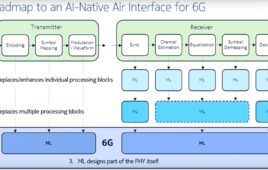The Nesbitt group has invented a nifty technique for exploring the physics and chemistry of a gas interacting with molecules on the surface of a liquid. The group originally envisioned the technique because it’s impossible to overestimate the importance of understanding surface chemistry. For instance, ozone depletion in the atmosphere occurs because of chemical reactions of hydrochloric acid on the surface of ice crystals and aerosols in the upper atmosphere. Interstellar chemistry takes place on the surface of tiny grains of dust. And, any time industrial chemists want to react a gas with a liquid or solid, the secret is getting the gas to touch the surface of whatever they want the gas to react with.
“At the surface of the ocean, for example,” explained Fellow David Nesbitt, “wave action generates small little liquid droplets that get popped up into the air. This is why it’s such a pleasant experience to be near the ocean, and it’s why we smell the ocean. And, there’s a great deal of chemistry occurs at the interfaces of these microscopic to nanoscopic aerosol particles.” Nesbitt added that it’s even possible that life itself may have originated inside microscopic liquid particles formed early in Earth’s history.
Back in present time, however, the new technique will help the group investigate the complex chemistry that occurs on the surface of liquids. For instance, the technique (which Nesbitt has dubbed the ultimate radar detector) can identify the quantum states of new molecules produced in chemical reactions that occur when a supersonic jet of gas molecules interacts with a liquid-like surface called a self-assembled monolayer, or SAM.
Some neat things about a SAM are that (1) the SAM sways around like a liquid even though it’s attached to a solid anchor at one end and (2) it’s possible to link different kinds of molecules to it. Different molecules on the SAM will react differently with the same supersonic jet of gas molecules. The new technique is able to not only identify the products of these chemical reactions, but also detect the flight paths and speed of all the molecules that come flying off the SAM.
The researchers responsible for inventing the new ultimate radar detection system (which they call Quantum-State Resolved 3D Velocity Map Imaging) are graduate student Carl Hoffman and Fellow David Nesbitt.




